Text
The problem with making mem cake poems for OCs or whatever is that I can write the JP ones just fine just give me like one piece of inspiration to latch onto and then 5 to 10 minutes of silence I’ll whip up an acceptable tanka. Fucking whatever. Easy. The English ones. The English
#FUCK poems. *i crumple Lily into a ball and slam dunk her into a basketball hoop*#Con stop yapping#Squid 2 the evolution of the squid
46 notes
·
View notes
Text
Japanese Studies - Self Care Edition
Japanese language-themed self care ideas, for those tough days:
brew a cup of your favourite Japanese tea in your favourite mug
read a favourite manga
cut up seasonal fruit (asian pears, apples, persimmons, etc.) and arrange it nicely on a plate, then use a tiny fork to eat it
watch a slice of life drama, anime, or documentary about Japan
listen to your favourite Japanese band or singer
fold origami
read a Japanese poem (original Japanese or translated) - e.g. haiku, renga, waka, tanka - or try to write one of your own, in Japanese or English
consider nature around you, in terms of wabi (transient and stark beauty), sabi (the beauty of imperfection and aging), and yūgen (profound grace and subtlety)
watch a Japanese children's show or something that makes you feel nostalgic
write something to your future self in Japanese with cute stationery and seal it for later
Don't forget to take a break from your studies to rest and relax and take some time for yourself!
24 notes
·
View notes
Text

Today is October 15, 2024. I went to the Botanical Gardens with my English class! This was a hidden treasure I never knew existed! I’ll have to check this place out a lot more this quarter!! It’s right by the nursing building. We trekked here because we’re learning about Japanese poems called tankas. This is a poem in which the lines have the syllable pattern of 5-7-5-7-7. After this, I went to my chemistry discussion in Young Hall. I also swiped for a Peets coffee and chocolate chip muffin. Oh how yummy it was in my tummy. 10/10 would recommend. #hiddentreasureofucla #tanka #botanical #nature #socool #serenity (I got 4 hours of sleep.)
9 notes
·
View notes
Text
GOetry club prompt
Form: Tanka Prompt: An Item

I didn't do the prompt right. Sorry! I forgor.
Weekly GOetry Prompt Repository | Main Poetry List
わたしたち くろいとしろい いしょうには おわりにちょくめん あいだけをもって
English version:
Yourself and myself Black and White as we both are Together we two Will face the end side by side With only love between us
Direct Translation (better):
Us Black and White Together Facing the end With only love
Weekly GOetry Prompt Repository | Main Poetry List
This poem is also available on AO3.
@isiaiowin
10 notes
·
View notes
Text
tanka 5-7-5-7-7 but you do old english alliterative verse and the 5th line is just unpaired kind of like a bob and wheel thing
17 notes
·
View notes
Text
Two Japanese mother's day poems from a transgender daughter (me). First, a haiku:
母の日や娘になった元息子

And an acrostic tanka:
ありのままリトルな息子が長女に
という化成をうたう母への
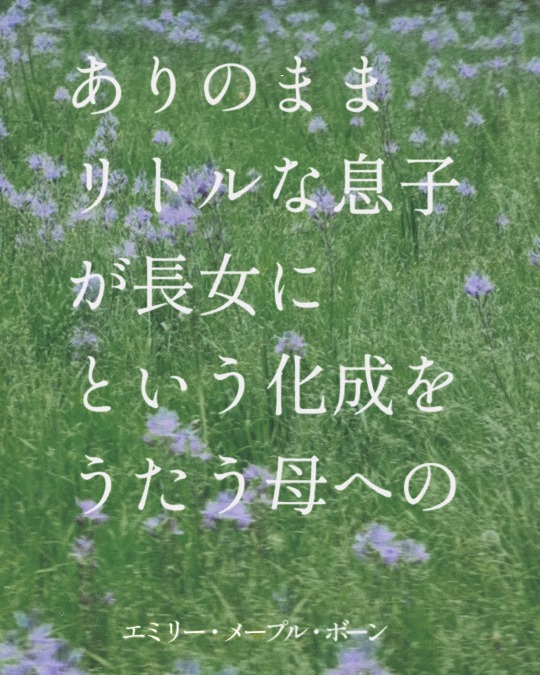
For translations and short reflections, see below
and a former son who has
The haiku has 母の日 (Mother's Day) as its season word and translates to something along these lines:
Mother's Day!
become a daughter
True to herself, a little son has become an eldest daughter
Usage of the word "元息子" (former son) is not about the idea of whether the daughter in the poem was once a boy or a man, but about the fact that her mother no longer sees her as her son (but as her daughter instead).
As for the tanka, this one is difficult to translate while maintaining its acrostic nature. If you take the first kana of each of the tanka's five verses, they spell out the word ありがとう (thank you). My intention here is for this 5-morae phrase to act as a little sixth verse. If I were to translate those six Japanese verses into three English lines then, it would become as follows:
To the mother who sings of this metamorphosis,
A "thank you"
Writing an acrostic 5-7-5-7-7 in English based on the tanka, I also ended up with the following poem:
true to herself, once
her mother's first little son,
an eldest daughter
now, her mother hums so
kind, of metamorphosis
Emily Maple Boon
10 notes
·
View notes
Text
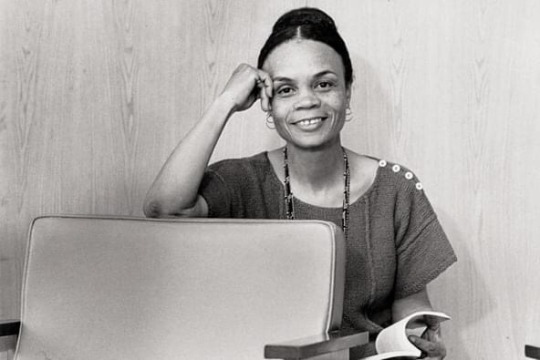

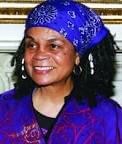


“Sonia Sanchez was born Wilsonia Benita Driver in Birmingham, Alabama. After her mother’s death in 1935 she lived with her grandmother. Her grandmother taught her to read at age four and write at age six. When her grandmother passed away in 1943, she moved to Harlem, New York where she stayed with her father Wilson Driver.
Driver attended Hunter College in New York City where she took creative writing courses although she graduated with a B.A. in Political Science in 1955. Continuing her education at New York University, Driver focused on the study of poetry. She also married and divorced Puerto Rican immigrant Albert Sanchez, although she retained his surname. She later married poet Etheridge Knight and together they had three children. They would later divorce.
In 1965 Sanchez taught at San Francisco State University. The course she offered at San Francisco State in 1966 on the literature of African Americans is generally considered the first of its kind taught at a predominately white university.
Sonia Sanchez released her first collection of poetry in 1969 entitled Homecoming. Her poetry was described at experimental and innovative; Sanchez was the first to blend the musical elements of the blues with the haiku and tanka poetry styles. She tackled many genres of literary art such as writing children’s books, and plays. Sanchez is most famous for her Spoken Word poetry books. She was awarded the American Book Award in 1985 for one of her best-known books, Home girls and Hand grenades.
Sanchez was a major influence in the Black Arts and Civil Rights Movements of the 1960s. She was an active member in the Congress of Racial Equality (CORE) as well as the Nation of Islam. She was inspired when she met Malcolm X and used his vernacular in some of her poems. She left the Nation of Islam after three years of affiliation in protest of their mistreatment of women. She continues to advocate for the rights of oppressed women and minority groups.
Sanchez has received countless awards for her work including the P.E.N. Writing Award (1969), the National Academy of Arts Award (1978), and the National Education Association Award (1977-1988). She has guest lectured in over 500 colleges and universities. Her poetry has been heard worldwide in Africa, Australia, Canada, the Caribbean Islands, China, Cuba, Europe, and Nicaragua. Sanchez’s last faculty appointment was at Temple University in Philadelphia where she was the first Presidential Fellow at that institution and the first to hold the Laura Carnell Chair. Sanchez taught courses in English and Women’s Studies until her retirement in 1999.”
Ms. Sanchez now resides in Philadelphia, Pennsylvania.
5 notes
·
View notes
Text
something that i feel like is hard to express to other people is that. hong kong as a place and a cultural identity sort of doesn’t exist outside of the context of colonization. like of course the land always existed and the people always existed, there were hakka and hoklo and a bunch of other ethnic ‘minorities’ in the area that’s now known as hong kong before. anything ever happened. but what’s now regarded as hong kong and it as a cultural identity? that was created by colonization.
this strip of land was just. land. then it was ceded to the british for 99 years, after china lost the opium war. just… exchanging this piece of land and its people from one colonial power to another like it’s some sort of pet. in some ways it sort of is, hong kong was always the golden goose of finance. not really anymore now i imagine, but it used to be. but the point is that that act of ceding the land and handing it over to british rule was what made hong kong, hong kong. and then of course british rule changed the people, 99 years is at least two, three generations. it’s not… clear cut. i can’t speak to what life was like then. but things changed. people were westernized, english became more dominant.
i think my generation felt the effects very hard though, though i hesitate to say we felt it hardest. growing up i was spoonfed the idea of hong kong being a bilingual city, and we were taught english extensively because of that. and like, i’m grateful that i get to know more than one language; english has afforded me so much. but it doesn’t change the fact that hong kong didn’t start off as a ‘bilingual city.’ that was because of british rule. that’s still colonization. and what china is doing with mandarin is the same thing too.
i just. i keep thinking about this. i keep trying to find a way to define my culture and i keep drawing a blank. i’m culturally chinese but also not chinese in the same way someone from shanghai is because we were under british rule, but also we’re not british because we’re chinese, but we’re not chinese because we’re too british to be chinese. we’re just both. and neither. i don’t know if that even makes sense. maybe that’s not even true, because i grew up so sheltered because of circumstances. i don’t know what people usually do in hong kong, i don’t know my own culture because no one ever let me have a connection to it. but i know it has both chinese and british influences.
which, again, just. that wouldn’t be true if it weren’t for colonization. there is no hong kong as it is now without colonization. and the concept of indigeneity with hong kong is fucking messy too because like there were hakka and hoklo and tanka and whatever else i’ve missed, and i guess they were here First and they did tend to the land but. but i don’t know. i was never taught about this and i don’t know where i’d even start learning. i don’t know what to search for in chinese. hell, ‘chinese’ itself is loaded. hakka and hoklo and tanka all have their own languages. maybe the same script but it’s still a different language. so i don’t know how i’d even begin to learn about this. people just don’t talk about it because being han chinese is so ubiquitous and unchallenged. i’m an eighth hakkan but i don’t think the remaining seven eighths are just han but i don’t know because i can’t ask my parents. i don’t think my mom even knows. two of my grandparents are dead but i don’t know how i’d even ask. god, my family is a mess.
i don’t know where i’m going with this. it feels almost shameful to say that my entire culture was a result of colonization. i don’t know if i’m right or not, i don’t really want to be, but i don’t know how else to describe it. we’re chinese but we really aren’t, but we sure as hell aren’t british. it’s complicated. i hate how things have gone. i just know that whatever my culture is, it’s being erased.
#rambles#recently i’ve been calling myself a cantonese person instead of chinese#i am cantonese. and culturally chinese#but this whole mess just makes me sad
9 notes
·
View notes
Text


Fusako Shigenobu, In Her Own Words
Risograph 10 page zine, 2023
Layout and design, printmaker
“Fusako Shigenobu, In Her Own Words” is an English translation by Lisa Hofmann-Kuroda of Fusako Shigenobu’s newsletter written in December 2021. Fusako is the former leader of the Japanese Red Army, a communist guerrilla organization which carried out attacks against the embassies of various Western states, the US military, and multinational corporations from the 1970s until the late 1980s, in solidarity with the Popular Front for the Liberation of Palestine (PFLP).
During her time in prison in Japan, Fusako was supported by a small but steadfast group of comrades who called themselves “The Olive Tree.” For over twenty years, this group published a monthly newsletter that allowed Fusako to communicate her thoughts to the outside world, including her reflections on current affairs, particularly the geopolitical situation in the Middle East; daily diary entries detailing her observations from prison; original tanka poems; as well as letter exchanges she had with those who wrote her from the outside. After twenty years incarcerated, Fusako was released in May 2022.
7 notes
·
View notes
Note
im sending a cute moth to cheer you on while you're high
Oh man I love moths, fun fact; in my Native language the word for moth roughly translates to "The Night Spirit Butterfly" and I unironically think that's such a great name for moths
I wanted to see about the credibility of this however since a lot of the time I've heard people say that "the Native american word for this is [generic mystical sounding animal thing]" and then I look it up and it's like "nah we just kinda call that a bird." So I did some digging and located the original text it's sourced from:

I've been learning Lakota since it's my Native language and I was forced to learn English directly after learning barely enough Lakota to be conversational; since I wasn't able to keep up in school when it came to learning English. This is why I will always say English is my second language, because I was literally taught Lakota first and it made learning English significantly harder.
As a quick aside, I think it's interesting that after learning Lakota I had much more trouble learning English; while my brother who did not learn Lakota had no trouble picking up English as a first language. I believe this is honestly because English uses a completely different sentence structure and since my brother didn't have anything to compare it with it became the first and only structure for sentences he knew; it was the only pronunciation he knew. Meanwhile I had learned that wášte is pronounced like "Wash-teh" with a very subtle "ee" after the h, so then I went to school and they said "okay here's the word "Waste" how do you say that?" Not to mention the word wášte basically means "good" so learning an entirely new concept of a word made no sense at a young age.
Regardless, now I'm older and have a better grasp on how language works since I've spent my life learning a good few now (memory problems be damned) translating everything from games to web comics and novels for fun. So I've picked up Lakota and boy I forgot just how much of a weird language this is.
Like okay I know we're on a tangent here, but hear me out right; I need to explain this because it baffles me why they would do this.
So the word tȟó means blue, the word zí means yellow, and the word šá means red.
So then if we know what Blue, Yellow, and Red are; what do you think the word tȟózi means? It means Green right? because Blue and Yellow make green! Alright so then what about tȟóša it's gotta be Purple right? Yea exactly! Because Blue and Red make Purple! Okay one more here, zíša You probably already know this is Orange because of how this has been working so far; and that's 100% correct! It's a really simple and effective system right?
Alright, so then if we look at Black which is sápA and White which is ská we should be able to discern Gray!
So then what would Gray be? Based on what we know; there are two possible answers right? So we all agree that it's ȟótA right?
...
...
...
Wait, oh no it had such a good system it can't just NOT use it...
SURELY Pink would just be Red and White right?! Skasa or Saska or something...
WHY IS IT šamná?! In fact why is it šamná / šásaŋ / šástaŋ?!
Yea so anyways color system was so cool until they decided to just not use it and I am forever baffled by why this is the case.
So knowing what I know let's look into our case of the Night Spirit Butterfly.
Well right off the bat we can see it uses the word for Butterfly, that being Kimimila and I happen to know very well the word Nagi or "Wanagi" means Shadow or Spirit. So that gives us Wanagi and Kimimila but we're still missing that bit in the middle, where does that Ta come in?
Well the only example of ta being used is in the word Tatanka, which is literally the word Tanka and the word Ta which is cited as making it possessive. My best guess is that in this case it's being used as some kind of particle but I don't necessarily see how it making the word Wanagi possessive would fit that translation. That would make it closer to The Spirit's Butterfly, or something of that sort.
Of course this source actually does know what their talking about upon further reading through the document they have a lot of translations that are perfectly accurate so I believe them on this one but personally the inclusion of the "ta" particle there makes me wonder if it was suppose to be something closer to seeing the night in a possessive sense.
As to say Butterflies are to the day what Moths are to the night, they are The Night's Butterfly. The only issue there is that we need to remember that Nagi and Wanagi don't really mean "Night-Spirit" like that they do mean Shadow or Spirit and in some cases even Soul or Ghost depending on the context so I see even "The Ghost Butterfly" as being more accurate than to say The Night-Spirit. However this might just be a case of it being context sensitive as it does get across the fact that they're nocturnal rather than just being a dark butterfly.
Bonus fun fact, Mothman is my favorite cryptid.
tl;dr
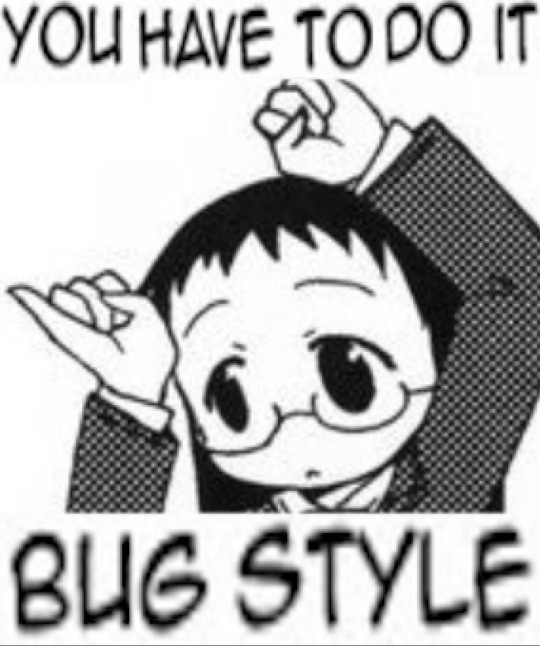
5 notes
·
View notes
Text
my current insane plan is trying to read 推し短歌入門 (an introduction to tanka through composing poems about your favorite characters) by april 19, 2023, the date of Hyper Misao's second produce show, because Misao loves tanka and i feel like it might make her day if her own wrestling work inspired someone to write tanka, so i want to read that book and learn the basics of writing them, then compose a tanka based on her show and post it on twitter (where there's a strong chance she'll see my poem).
the only problem is that i have a whole lot on my plate reading-wise right now, because TJPW is about to be in the middle of an extremely busy period, so there will be a big show that i’ll have to translate next week, and then their show in America, which will likely include a press conference that i will also have to translate, and i’ll be watching a whole bunch of other shows on top of all of that.
oh and also i still have yet to have actually finished reading a proper book in Japanese (just manga and a fair amount of digital text and a few books with a lot of English in them), so this one would be my very first finished Japanese book, and it’s quite a bit harder than everything else i’ve read. and not to mention i’ll be attempting to compose poems in a language i’m not at all fluent in.
what could possibly go wrong? 😅
the book is a little less than 90k characters total, and i have to read it at roughly a rate of 3k characters a day to keep up. this is fine when i have no translation workload. it’s substantially harder when i do. so far, i’m doing an okay job keeping up, but the real busy days will be the end of march and the first week of april, so i’m hoping to get a bit ahead now while i still can in case i fall behind then.
i am currently 22k/90k characters into it! roughly 1/4 of the way through!!
i'm actually enjoying the oshi tanka book more than i expected! it's LGBTQ-inclusive (the author used an example from The Half of It (2020 Alice Wu film) when talking about other ways to say "i love you" without using those words, and in the section i just read, there was a tanka that was explicitly about a lesbian relationship used as an example). it also cited Henry Jenkins, which shocked me, hahaha.
it feels honestly about as accessible for beginners as it can be (barring the language barrier). i feel like i'd be struggling more if i didn't have the little experience that i do have reading senryu (and composing a couple), since a tanka is basically a senryu/haiku with 14 extra mora. but i'm picking up on a lot of things from reading it, and i managed to successfully compose my first tanka:
半時間あなたと俺のにらみ合い空き会場を照らす火花だ
(inspired by this)
#i hate translating my own poems so no translation sorry#also i finally migrated to yomitan from yomichan and am reading this with a new beefed out dictionary setup which helps a lot#~
4 notes
·
View notes
Text
Eiji Akaso speaks to a "small magazine"
Summary
🔸When he was 20,21 years when was barely surviving as actor he started to read Nietzsche,him at that same age was jobless like him so he started to read his books
🔸Education was never difficult [from an early age he was told : if you study hard as a child, you will have many more choices in front of you in the future to help you find your goals,so even now as an adult he always studies even its hard now like an habit].
🔸 English was his favorite class that's why he wanted to majored in English.
🔸he first told his mother he wanted to be an actor,she said she will support him but she said : " the problem is your father isn't"
🔸As his father was an university professor he worried but his dad kindly gave him a push saying: "it's good you found what you want to do"
🔸Kuroko's basketball Director's impression of Akaso [Most of the actors I contacted wanted to show their faces, so that the director could see more of them, but Akaso was the opposite, very low-key, and he was always talking about acting, so I thought this kid was too sincere, and that's what made the director appreciate Akaso.
🔸During Cherry Maho🍒he realized communication was Important on his growth & changed, before this he was afraid to give his opinion & have discussions about the play.
🔸About Haruka:
"After we got married in the Novel we talked about what this scene we convey than we didn't when we're childhood friends.
wearing a hanger, laughing & jocking around,I clearly separated my time off & on(laughs)"
🔸From the beginning to the end Akaso responded politely
The last sentence of the interview script is also moving
"I asked a Hundred Billion stars to illuminate Akaso new path" ( referring to Takashi famous tanka in the series)
Intercepts of the interview ⬇️
"Friends and relatives say to me 'I'm watching, congratulations', and I'm happy to be called 'Takashi' when I walk on the street"
Previously, Akaso was notable for his works geared toward the younger crowd, and this time, his smooth yet gentle tone in the morning drama has skyrocketed his popularity among housewives.
In order to find out what kind of character he really is, Bunshun "small Magazine" hastily applied to him personally for an interview & collect materials, and received permission.
"I lost more auditions than I can count, and the first few years I was living on a part-time job. The first year there were two or three job opportunities, but they were all one-line roles. Even when I tried to honor my parents with my first paycheck, it was all used as living expenses ....... I remember being very upset. It really was a barely living life, not living without working meals, and only buying things on discount sale at the supermarket. Barely making ends meet."
Norihito Nakayashiki, who wrote and directed the 2016 stage plays "Kuroko's Basketball", revealed. "A lot of young actors love to act like, 'Look at me. I want to be popular', but he is the complete opposite. It's rare to see actors with such low self-promotion skills (laughs). But I was attracted to such an Akaso. I remember during rehearsals he would ask, 'How are my lines?' He was always talking about acting.
"At that time, I was not experienced enough to express my opinion, but I didn't answer yes or no immediately to what my senpais told me, Instead ,I thought about it carefully in my own mind. "
He was a sincere actor who faced acting.
"At that time, I think I was still in the dark" Where did he get the proof that he could continue as an actor?
Akaso said again.
"I haven't any confirmation yet, but what made up my mind was during the time of "Kamen Rider Build". (The super masked heroes series) lasted for a year, and the children would call me 'Banjo'. I guess the children didn't want to see a Kamen Rider in a part-time job. After that, I decided to never live on part-time jobs again"😭
*( it's hard not to love Him ,who gently guards the children's dreams 🥹🥺)
Source:


#thanks to his role in Maiagare he has success in the national district#a new peak of popularity has reached#hes know as Takashi kun in Japan thanks to the wide rage Audience who watch asadoras#im so happy and proud 🥹
20 notes
·
View notes
Text

This week's #zine #review is of "Japanese Superfun Redone #3: Shorties Hollering Tanka Very Much" by Brian-Paco Bertrand!
This is a poetry/art zine featuring six English-language tanka. I'm not familiar with the poetic form, so I had to take a moment to sit with them. The imagery is intriguing, the word choice descriptive.
4 notes
·
View notes
Text

MY REMARKABLE WRITERS
2 Remarkable Filipino Writers in the Different Periods in Philippine Literature
A vast and varied body of writings, Philippine literature reflects the history, culture, and customs of the nation. Over the years, a number of superior writers have come out of the Philippines, establishing works that have won over readers both domestically and abroad. Two of the most notable Filipino authors from various eras of Philippine literature will be highlighted in this introduction.
In the Period of Enlightenment (1872–1888), the Filipino spirit was reawakened after 300 years of apathy under Spanish control when three priests, Gomez, Burgos, and Zamora, were guillotined without adequate evidence of guilt.
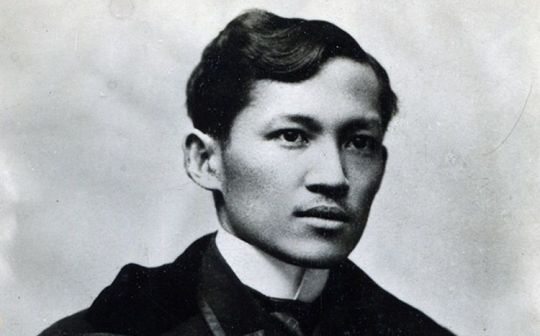
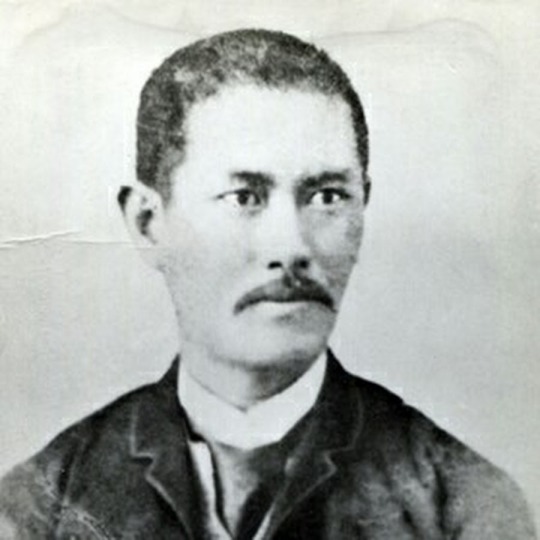
Dr. Jose Rizal was a nationalist, author, and revolutionary from the Philippines who inspired a movement for Philippine independence. His legacy has continued to motivate Filipinos to fight for social justice and independence.
Graciano Lopez Jaena was a key figure in the late 19th-century Philippine independence movement, rising to prominence in the Propaganda Movement. He was persecuted and exiled, but never wavered in his dedication to the nationalist cause.
Dr. Jose Rizal and Graciano Lopez Jaena were both influential figures in the Philippine nationalist movement during the late 19th century. Both Rizal and Lopez Jaena were important figures who played a key role in the development of Philippine nationalism and the struggle for independence from Spanish colonial rule. Their works and ideas continue to inspire and influence Filipinos today.
Consequently, the American Regime (1898–1944) was heavily influenced by American culture and values, resulting in a shift from traditional forms to modern and westernized styles. English became the dominant language of literature, replacing Spanish, and many writers adopted the themes, forms, and techniques of American writers.

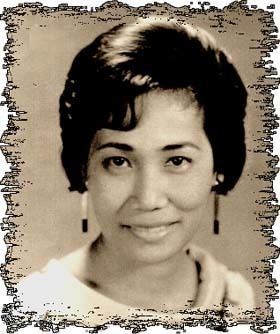
This period saw the emergence of notable writers such as Jose Garcia Villa and Paz Marquez-Benitez, who explored diverse themes such as identity, colonialism, and social justice. Despite its American influence, Philippine literature during this time also reflected the unique experiences and struggles of the Filipino people under colonial rule.
Jose Garcia Villa was a Filipino poet, author, and visual artist renowned for his avant-garde writing style and influence on generations of authors and poets.
Paz Marquez-Benitez was a Filipino author and educator born in 1894 who wrote "Dead Stars" and contributed plays, short stories, and essays to publications. She died in 1983.
Both Marquez-Benitez and Villa were important figures who helped establish Philippine literature in English as a vital part of the country's cultural heritage. Through their writing and criticism, they contributed to the growth and development of modern Filipino literature and helped pave the way for future generations of writers.

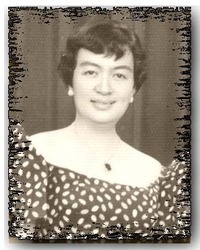
After the Americans, the Japanese Period from 1941 to 1945 entered. One of the two remarkable writers during this period was Juan Laya who is unable to adapt to the Japanese occupation and become a prolific writer in Filipino, contributing to Philippine literature and social realism.
And one of the most important authors in Philippine literature Liwayway Arceo is a well-known Filipino author who examines social and political concerns in her short tales and novels, such as "Lupang Tinubuan".
Both Laya and Arceo were important figures who helped shape Philippine literature during the Japanese period. Through their works, they captured the complexities of life under occupation, and helped preserve and promote the Filipino language and national identity during a time of great challenge and upheaval in the country's history.
In this period, it involves and introduces the poems Haiku, Tanka, Tanaga, and Karaniwang Uri, which are known in this new century.
Alternatively, Philippine literature in English from 1941 to 1945 was halted because of the strict Japanese prohibitions on the writing and publishing of works in English. Philippine literature in English experienced a dark period. But there were two unforgivable and remarkable writers during this dark period.

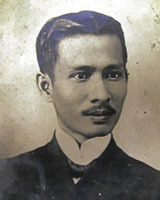
This period was connected to the American Regime, where there are three sub-periods: the Period of Re-Orientation (1898–1902), the Period of Imitation (1910–1923), and the Period of Self-Discovery (1925–1941), where there are two remarkable writers, Fernando M. Maramag and Carlos P. Romulo, who are the pioneering English poets during this period.
One of the founders of contemporary Filipino poetry Fernando M. Maramag was a founding figure of contemporary Filipino poetry, using English language and a formalist style to explore the struggles of a young woman in the country.
Another one, Carlos P. Romulo was a Filipino diplomat, journalist, author, and politician who achieved significant accomplishments for his nation, both domestically and internationally.
Overall, both Maramag and Romulo were important figures who made significant contributions to the development of Philippine literature in English during the period from 1941 to 1945. Through their works, they helped to establish and shape the literary culture of the country, and their legacy continues to inspire and influence Filipino writers today.
Following that, the Filipino youth are awake during the Period of Activism, known as the Bloody Placards Period from 1970 to 1972. Pociano Pineda claims that domestic and international issues contributed to the 1970–1972 youth activism. Activism and our country's history are intertwined. Pineda added that the youths had demonstrated at this point that our nationalism and race are not formed by perpetual denial. The amount of patience one has is limited. If overworked, it can erupt like a volcano.
However, the New Society Period from 1972 to 1980 approached, and it was interconnected to the Period of Activism, where the Green Revolution, family planning, a healthy diet, the environment, drug addiction, and pollution are just a few examples of subjects that were almost universally related to how the country was developing or progressing. The New Society made an effort to stop pornography and other publications that had a negative impact on people's morals. The school organizations and all newspapers were temporarily suspended.
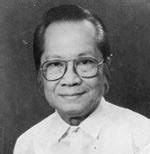

Because of that, the two remarkable writers facing this period are Ponciano Pineda was a poet who was known for his socially relevant poetry that tackled themes such as poverty, oppression, and the struggle for social justice. His works often highlighted the plight of the poor and marginalized members of society, making his poetry an important vehicle for social critique and commentary during this period.
Aniceto Silvestre, on the other hand, was a poet and literary and cultural critic who played a key role in shaping the development of Philippine literature during this period. He wrote a number of influential works on Philippine literature, including "Philippine Literary Criticism," which remains an essential resource for students and scholars of Philippine literature.
Overall, both Pineda and Silvestre made important contributions to Philippine literature during the New Society Period from 1972 to 1980. Through their works, they helped to shape the literary and cultural landscape of the country, and their influence continues to inspire and influence contemporary Filipino writers today.
Then came the Period of the Third Republic from 1981 to 1985, when the lifting of military rule in the Philippines led to a new nation known as the "New Republic" or "Third Republic," as our late President Ferdinand E. Marcos proclaimed during this period.
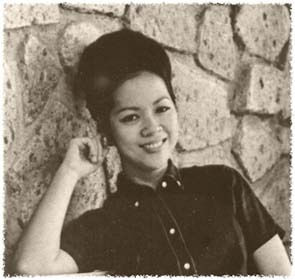

The two most remarkable writers during this period are Gilda Cordero-Fernando is a well-known writer, publisher, and cultural icon who has published extensively on topics such as women's issues, Philippine culture, folklore, and history.
Damiana L. Eugenio was a Filipino folklorist and literary expert who specialized in Philippine folklore, mythology, and stories. She received numerous honors for her contributions to Philippine culture and literature, including "Philippine Folk Literature".
Both Eugenio and Cordero-Fernando were instrumental in shaping the literary and cultural landscape of the Philippines during this period. Through their works, they helped to preserve and promote traditional Philippine culture and literature, while also addressing the contemporary concerns and issues of the time. Their contributions continue to inspire and influence contemporary Filipino writers today.
In the year when the Post-EDSA 1 Revolution (1986-1985) was published, journalism underwent a change from years of "guided newspapering" to free and ethical reporting. The "establishment" publications that supported Marcos shut down, while the alternative press rose to prominence.

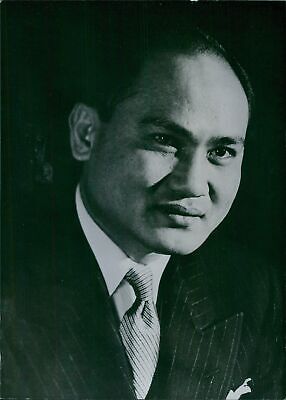
During this time, two remarkable writers were Bienvenido N. Santos was a Filipino-American writer, professor, and diplomat known for his works that addressed the lives of Filipino immigrants in America and the Philippines, such as "March of Death".
Lastly, Salvador P. Lopez was a writer, journalist, and educator who played a key role in shaping the development of Philippine literature and culture in the post-World War II era. He is best known for his influential essay, "Literature and Society," which argued for the importance of literature as a means of cultural expression and social criticism. Lopez also served as the first Philippine ambassador to the United Nations.
Overall, both Santos and Lopez made important contributions to Philippine literature during the period Post-EDSA 1 Revolution. Through their works, they helped to shape the literary and cultural landscape of the country, and their influence continues to inspire and influence contemporary Filipino writers today.
The literature of the Philippines has a long and varied history that reflects the culture, traditions, and struggles of the country.
Famous authors have contributed to the growth and evolution of Philippine literature from the Enlightenment to the Third Republic. Crafted by Jose Rizal, Graciano Lopez, Jose Garcia Villa, Paz Marquez-Benitez, Liwayway Arceo, Fernando M. Maramag, Carlos P. Romulo, Ponciano Pineda, Aniceto Silvestre, and Gilda Cordero-Fernando proceed to move and teach pursuers both locally and globally.
These authors have contributed to the development of a variety of literary forms, including poetry, short stories, essays, and plays, and they have investigated topics like identity, colonialism, social justice, and activism. Literature in the Philippines continues to be a vibrant and dynamic art form that adapts to the nation's challenges and shifting times.
9 notes
·
View notes
Text

Sonia Sanchez was born Wilsonia Benita Driver in Birmingham, Alabama. After her mother’s death in 1935 she lived with her grandmother. Her grandmother taught her to read at age four and write at age six. When her grandmother passed away in 1943 she moved to Harlem, New York where she stayed with her father Wilson Driver.
Driver attended Hunter College in New York City where she took creative writing courses although she graduated with a B.A. in Political Science in 1955. Continuing her education at New York University, Driver focused on the study of poetry. She also married and divorced Puerto Rican immigrant Albert Sanchez, although she retained his surname. She later married poet Etheridge Knight and together they had three children. They would later divorce.
In 1965 Sanchez taught at San Francisco State University. The course she offered at San Francisco State in 1966 on the literature of African Americans is generally considered the first of its kind taught at a predominately white university.
Sonia Sanchez released her first collection of poetry in 1969 entitled Homecoming. Her poetry was described at experimental and innovative; Sanchez was the first to blend the musical elements of the blues with the haiku and tanka poetry styles. She tackled many genres of literary art such as writing children’s books, and plays. Sanchez is most famous for her Spoken Word poetry books. She was awarded the American Book Award in 1985 for one of her best-known books, Home girls and Hand grenades.
Sanchez was a major influence in the Black Arts and Civil Rights Movements of the 1960s. She was an active member in the Congress of Racial Equality (CORE) as well as the Nation of Islam. She was inspired when she met Malcolm X and used his vernacular in some of her poems. She left the Nation of Islam after three years of affiliation in protest of their mistreatment of women. She continues to advocate for the rights of oppressed women and minority groups.
Sanchez has received countless awards for her work including the P.E.N. Writing Award (1969), the National Academy of Arts Award (1978), and the National Education Association Award (1977-1988). She has guest lectured in over 500 colleges and universities. Her poetry has been heard worldwide in Africa, Australia, Canada, the Caribbean Islands, China, Cuba, Europe, and Nicaragua. Sanchez’s last faculty appointment was at Temple University in Philadelphia where she was the first Presidential Fellow at that institution and the first to hold the Laura Carnell Chair. Sanchez taught courses in English and Women’s Studies until her retirement in 1999.
Ms. Sanchez now resides in Philadelphia, Pennsylvania.
Black Wall Street Book eStore
https://blackwallstreet.org/books
Support the Black Wall Street Movement
https://blackwallstreet.org/join
Top Seller: The 1619 Project
https://amzn.to/3Z5dVaj
The Victory of Greenwood
https://amzn.to/3ymULRs
Tulsa's Legacy: A Greenwood Novel
https://amzn.to/3FcnbRZ
The Burning: Tulsa Massacre
https://amzn.to/3YFfTgH
Hidden History of Tulsa
https://amzn.to/422YPEj
Dreamland: The Burning of Black Wall Street
https://amzn.to/404tGyB
The Photographic 1921 Tulsa Race Massacre
https://amzn.to/3YHztcf
From Burning to Blueprint: Rebuilding Black Wall Street
https://amzn.to/3J86ZTi
Tulsa, 1921: Reporting a Massacre
https://amzn.to/402dfm3
Tulsa's Black Wall Street: The Story of Greenwood
https://amzn.to/3yyARTY
Black Wall Street 100
https://amzn.to/4203qqV
Black Wall Street: From Riot to Renaissance
https://amzn.to/3Lj010s
I Am Black Wall Street
https://amzn.to/3ZGxlCQ
Black Wall Street and the Tulsa Race Massacre
https://amzn.to/3Lg6lpe
The Destruction of Black Wall Street
https://amzn.to/3l08X01
Death in a Promised Land
https://amzn.to/3mMLorI
Angel of Greenwood
https://amzn.to/3LfcKku
Unspeakable: The Tulsa Race Massacre
https://amzn.to/3J4adXM
Tulsa Race Massacre of 1921
https://amzn.to/3l7c0n2
The Nation Must Awake
https://amzn.to/3TcxYS3
Black Wall Street Burning
https://amzn.to/3JxqIgo
The Tulsa Massacre of 1921: America’s Worst Race Riot
https://amzn.to/3l406u9
Riot And Remembrance Tulsa Massacre
https://amzn.to/3J2vy3G
Hiding The Tulsa Massacre
https://amzn.to/3mJZkmy
11 notes
·
View notes
Text
I wrote a tanka referencing the latest Dune movie:
「太陽が黒色ですね」ってジエディ・プライム上の愛の告白
Translation:
"The sun is black, isn't it" - a love confession on Giedi Prime

Context: an often-referenced way of confessing one's love in Japan in an indirect manner is by saying 月が綺麗ですね (the moon is beautiful, isn't?). Renowned novelist Natsume Soseki is said to have once suggested this phrase as a Japanese translation for the English phrase "I love you", but that origin appears to be more of an urban legend than truth.
Anyway, in the second Dune film, we see a black sun from the perspective of the Harkonnen homeplanet Giedi Prime. As far as I am aware, it's left somewhat vague why exactly the sun is black--perhaps the sun itself isn't black and something in the atmosphere modifies its colour--but director Denis Villeneuve has said in an interview he thought it would be interesting "if instead of revealing colors, the sunlight was killing [people on Giedi Prime] and creating a very eerie black and white world".
An interesting decision indeed. It adds to the cold and cruel ambience of Giedi Prime. Underlying this tanka, then, is on the one hand the idea that even on such a planet feelings of love may blossom. But without things that spark beauty and happiness, it is the sun's pitch blackness that serves as a conduit for indirect love confessions.
As an added note: I have seen both ジエディ・プライム and ジェディ・プライム as katakana transliterations for Giedi Prime. I'm not sure if there's an official one, but I went with the former option for the sake of the tanka's moraic 5-7-5-7-7 rhythm.
9 notes
·
View notes